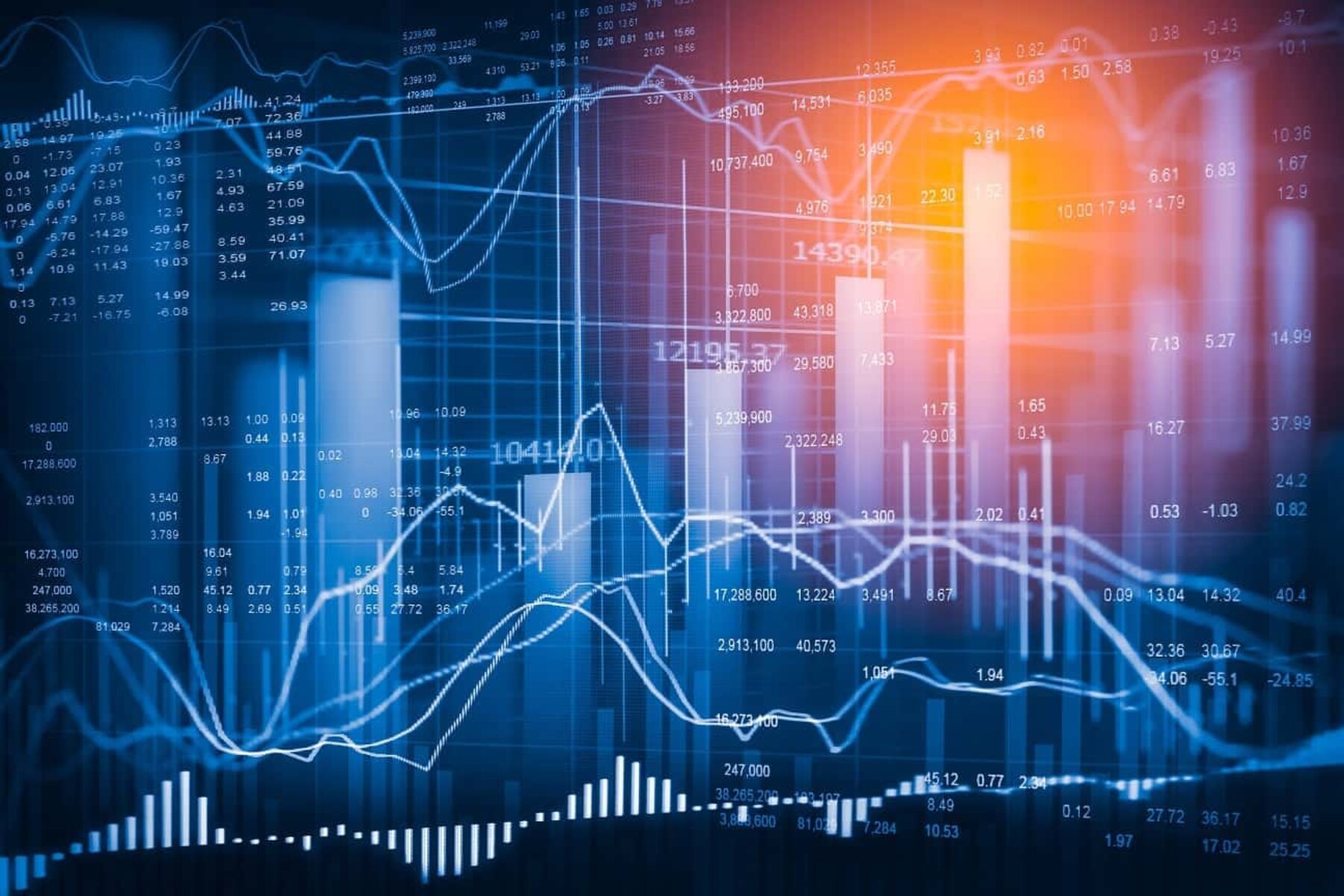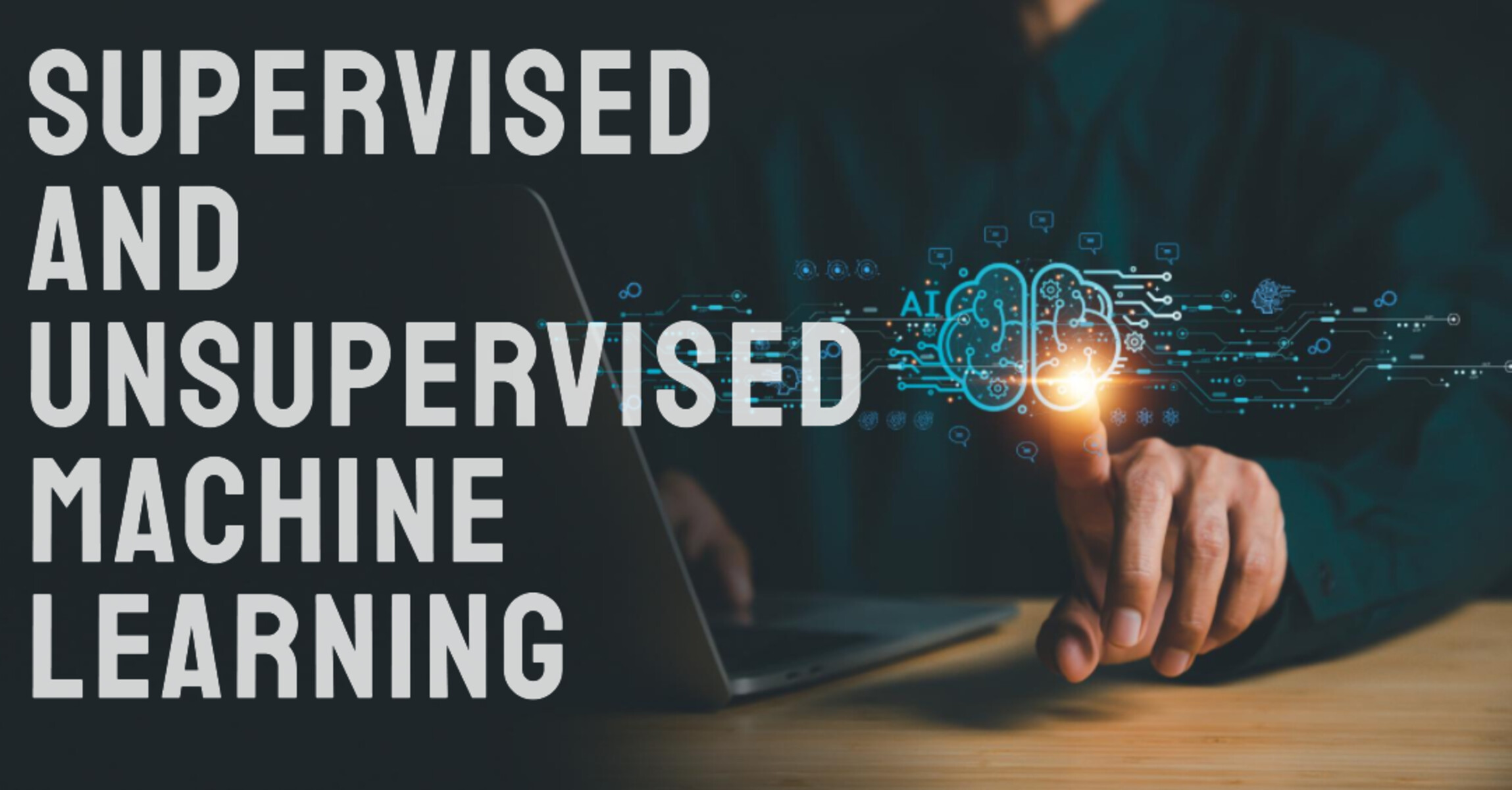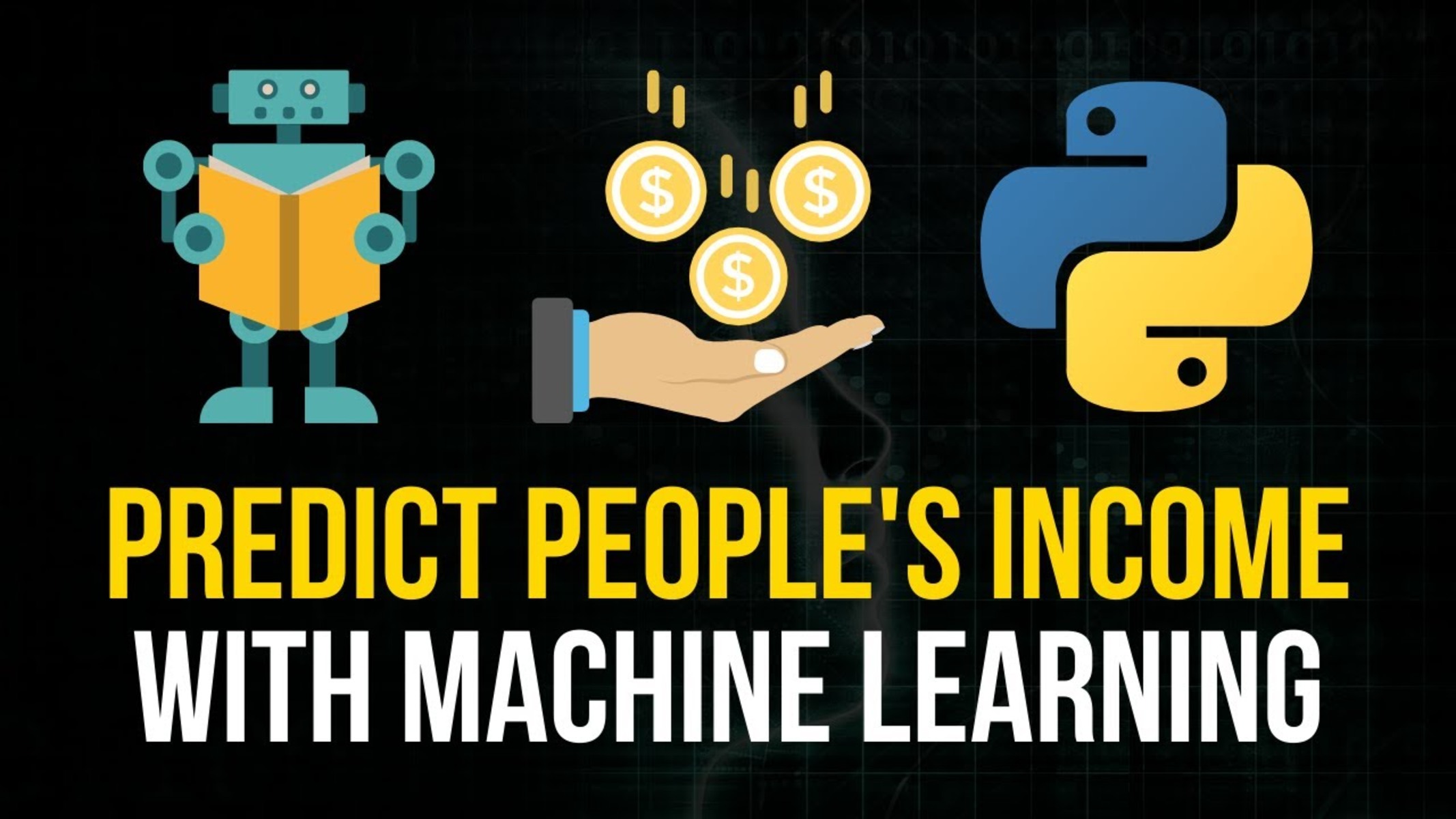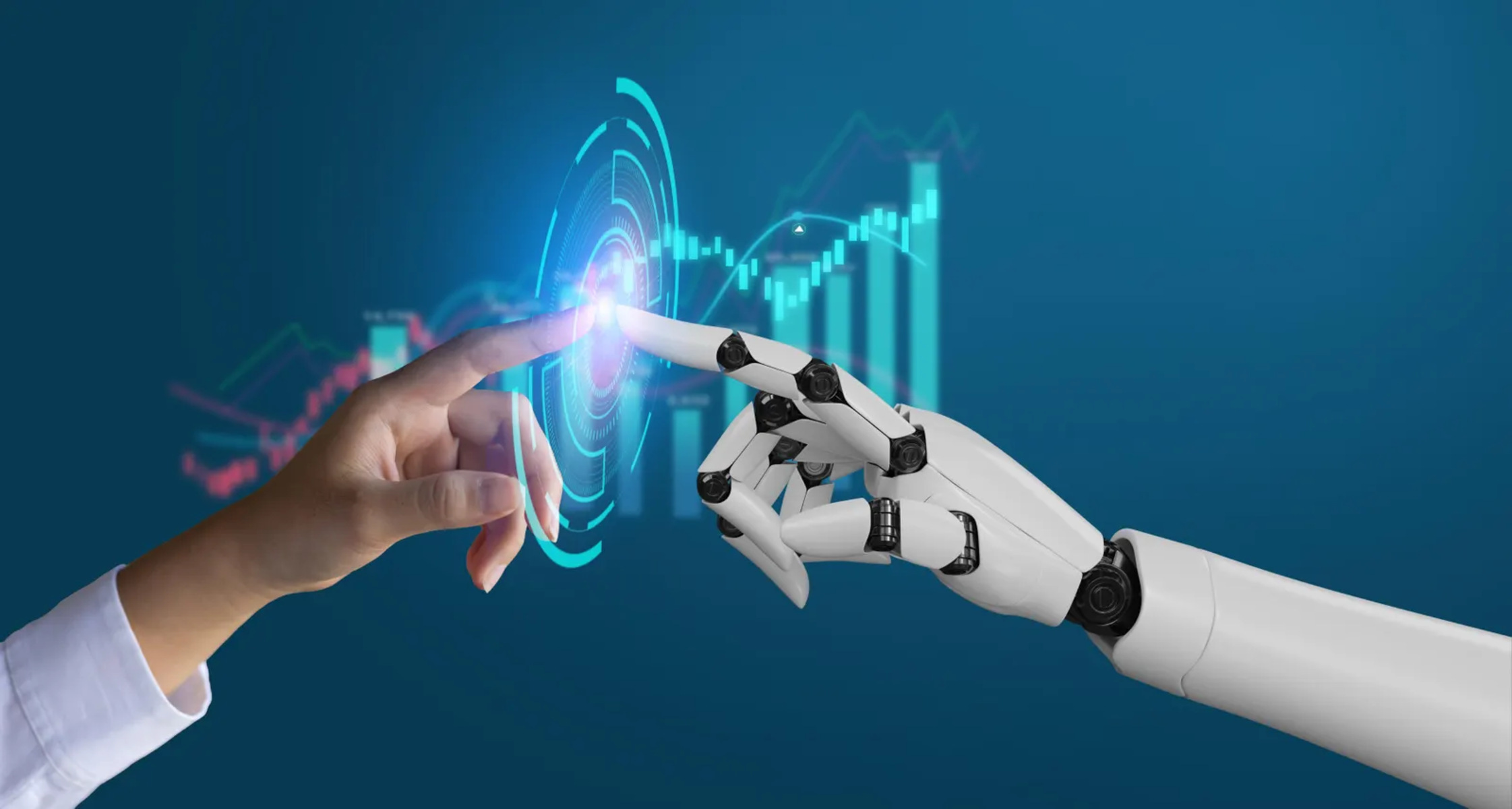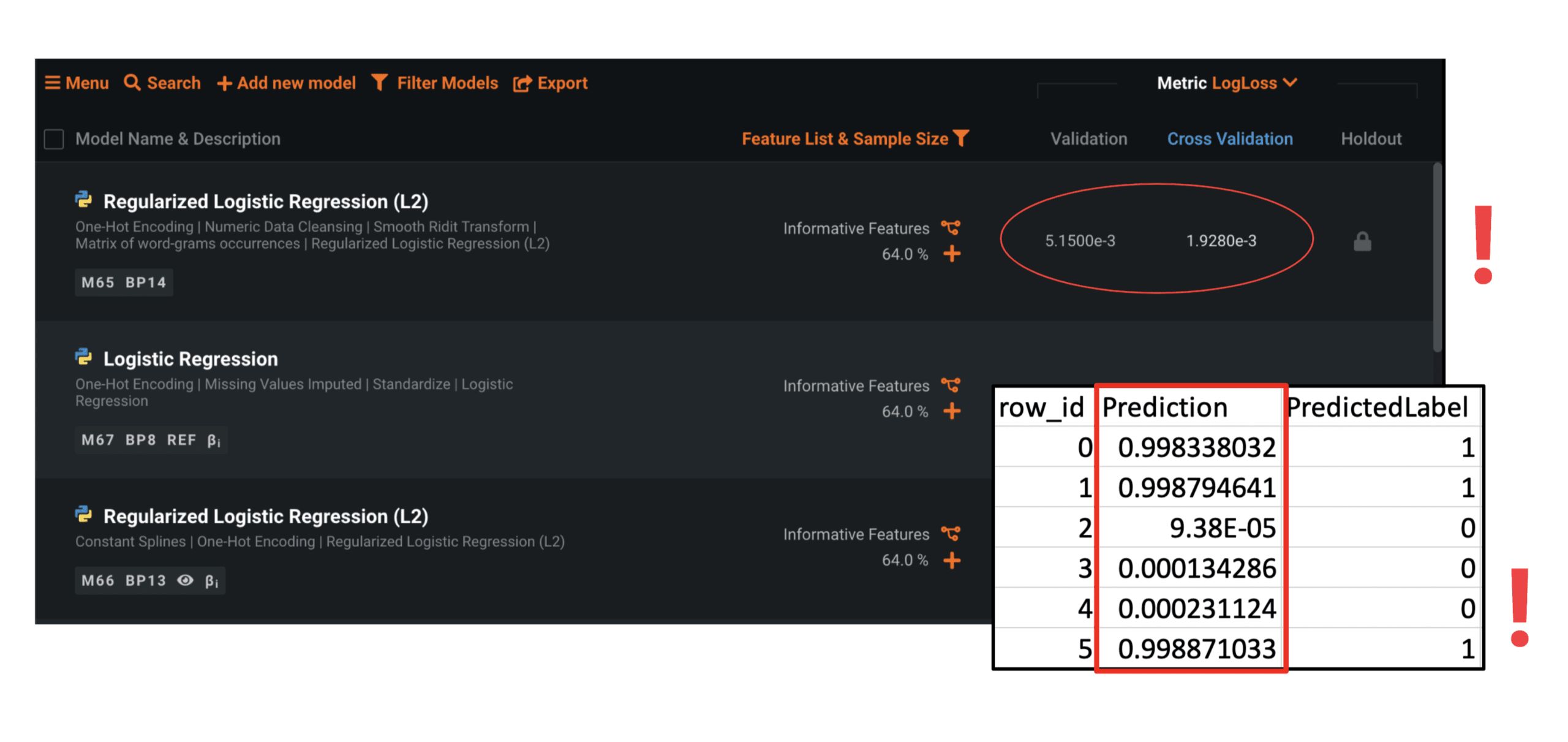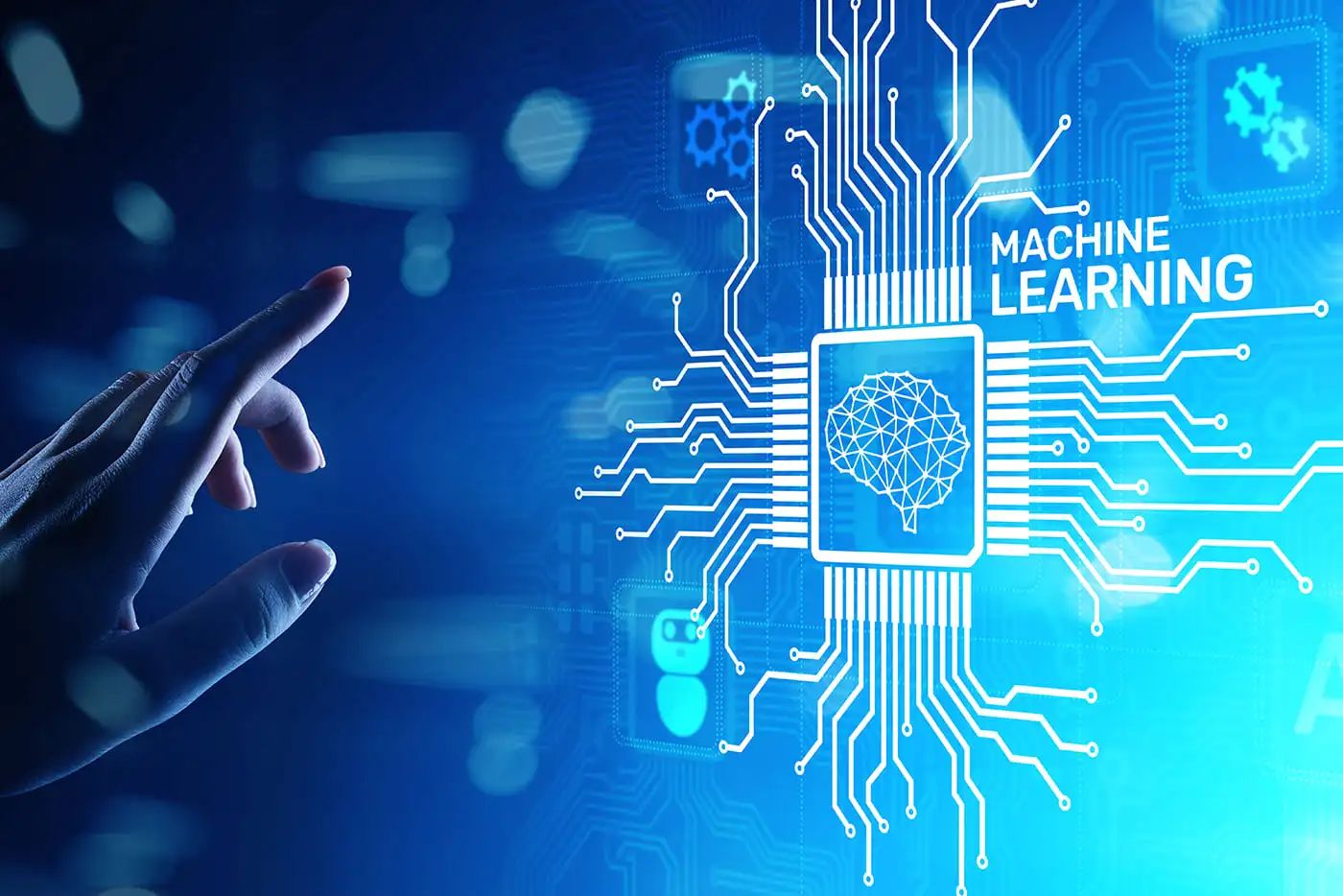Introduction
Stock prices are one of the most volatile and unpredictable aspects of the financial market. Investors and traders are constantly seeking ways to forecast stock price movements accurately. Traditional methods of analysis often fall short due to the complex and dynamic nature of the stock market. However, advancements in technology have opened up new possibilities.
Machine learning, a subset of artificial intelligence, has emerged as a powerful tool in predicting stock prices. By leveraging the vast amount of historical data and identifying patterns and trends, machine learning models can offer valuable insights into future price movements.
This article will provide an overview of machine learning techniques and how they can be applied to predict stock prices. We will explore the process of gathering and preprocessing data, feature engineering, selecting an appropriate machine learning model, training the model, and evaluating its performance. By understanding these concepts, investors and traders can leverage machine learning to make more informed decisions in the stock market.
Before delving into the details, it’s essential to recognize that predicting stock prices is not a foolproof method. The financial market is influenced by various factors, such as economic events, company news, and investor sentiment, which can cause sudden fluctuations in stock prices. Machine learning models provide a statistical approach to predicting stock prices based on historical data, but there are always inherent uncertainties in financial markets.
Now, let’s dive into the world of machine learning and discover how it can be harnessed to predict stock prices accurately.
Understanding Stock Prices
Before we delve into the application of machine learning in predicting stock prices, it’s essential to have a solid understanding of what stock prices represent and how they are determined.
Stock prices are the market value of a company’s shares, representing the perceived worth of the company by investors. These prices are influenced by various factors, including supply and demand dynamics, investor sentiment, economic trends, company performance, and industry conditions.
In a stock market, buyers and sellers come together to trade shares of publicly listed companies. The interaction of these buyers and sellers determines the stock prices. When there is high demand for a particular stock, the price tends to rise. Conversely, if there is an abundance of sellers and a lack of buyers, the price may decline.
Stock prices also fluctuate based on market expectations and news. Positive news such as strong corporate earnings, new product launches, or economic growth can cause prices to surge. On the other hand, negative news like poor financial results, regulatory issues, or global economic downturns can lead to a decline in stock prices.
Understanding the historical behavior of stock prices can provide valuable insights for predicting future price movements. Analyzing patterns and trends in stock price data helps in identifying recurring patterns and potential indicators of future price changes.
Technical analysis and fundamental analysis are two common approaches used to analyze stock prices. Technical analysis focuses on studying historical price and volume data to identify patterns, trends, and support and resistance levels. Fundamental analysis, on the other hand, assesses a company’s financial health, including its revenue, earnings, debt, and management, to determine its intrinsic value.
While these traditional methods provide valuable insights, they have their limitations. The stock market is highly complex, and stock prices are influenced by numerous factors that can be difficult to quantify accurately. This is where machine learning can play a crucial role.
By harnessing the power of machine learning algorithms and computational analysis, we can potentially uncover hidden patterns and relationships in large datasets that may not be apparent through traditional methods. Machine learning models can process vast amounts of historical data, identify relevant features, and make predictions based on the learned patterns.
In the following sections, we will explore how machine learning techniques can be applied to predict stock prices, starting from the process of gathering and preprocessing data.
Overview of Machine Learning
Machine learning is a branch of artificial intelligence that focuses on the development of algorithms and models capable of learning and making predictions without explicitly being programmed. It enables computers to analyze and interpret complex patterns and relationships within datasets, leading to valuable insights and predictions.
The main goal of machine learning is to develop models that can generalize from observed data and make accurate predictions on unseen or future data. This is achieved through a two-step process: training and inference.
During the training phase, machine learning algorithms process a labeled dataset, where the input data and desired output or target are provided. The algorithm learns from the patterns and relationships within the data, adjusting its internal parameters to minimize the difference between predicted and actual outputs.
Once the model is trained, it can be used for inference, where it predicts the output for new, unseen data. This allows us to apply machine learning techniques to make predictions, classify data into different categories, or detect anomalies in real-time.
There are several types of machine learning algorithms, each suitable for different types of problems:
- Supervised Learning: In this approach, the algorithm learns from labeled data, where the input features and corresponding output labels are provided. It learns to map the input features to the output labels, enabling it to make predictions on unseen data.
- Unsupervised Learning: Here, the algorithm learns patterns and structures within unlabeled data. It aims to discover hidden relationships or groupings in the data without any predefined labels.
- Reinforcement Learning: This type of learning relies on an agent interacting with an environment and learning through trial and error. The agent takes actions in the environment, and based on the outcomes, it receives rewards or penalties. The goal is to maximize the cumulative reward over time.
Machine learning models can be further categorized into regression models, classification models, clustering models, and more, depending on the nature of the problem and the desired output.
In the context of predicting stock prices, regression models are commonly used. Regression aims to predict continuous numeric values, such as the price of a stock. By analyzing historical data and identifying patterns, these models can make predictions about the future movement of stock prices.
Having grasped the fundamental concepts of machine learning, let’s now shift our focus to the process of gathering data, an essential step in building robust machine learning models for predicting stock prices.
Gathering Data
Gathering relevant and reliable data is a crucial step in building effective machine learning models for predicting stock prices. High-quality data plays a significant role in training accurate models and generating reliable predictions.
When it comes to predicting stock prices, there are various sources of data that can be utilized:
- Historical Stock Price Data: This data provides a record of past stock prices, including open, close, high, low, and volume. It is essential to gather a significant amount of historical data to capture various market conditions and trends.
- Fundamental Data: Fundamental data includes information about the company’s financials, such as revenue, earnings, debt, and assets. This data provides insights into the company’s overall performance and can be useful in predicting stock prices.
- Market-Related Data: Market-related data, including economic indicators, news sentiment, and industry-specific trends, can have an impact on stock prices. Incorporating this data can enhance the accuracy of the predictions.
There are several ways to gather this data:
- Public Financial Databases: Financial databases like Bloomberg, Yahoo Finance, and Alpha Vantage provide historical stock price data, fundamental data, and other relevant financial information.
- Web Scraping: Web scraping techniques can be used to extract data from websites, financial news articles, and social media platforms. This can help gather market-related data and sentiment analysis.
- APIs: Application Programming Interfaces (APIs) offered by financial data providers allow developers to access and retrieve data programmatically. APIs like Alpha Vantage, Quandl, and Intrinio provide access to a wide range of financial and stock market data.
It’s important to ensure the data is accurate, up-to-date, and properly formatted before using it for analysis. Cleaning and preprocessing the data is necessary to handle missing values, outliers, and inconsistencies that could impact the model’s performance.
Additionally, it’s crucial to maintain a continuous flow of data to keep the model updated and adaptable to changing market conditions. Real-time data feeds or regular data updates can be implemented to ensure the model remains relevant and reliable.
With a solid understanding of data collection methods, we can now move on to the next step: preprocessing the data. Data preprocessing involves cleaning, transforming, and organizing the data to prepare it for analysis and modeling.
Data Preprocessing
Data preprocessing is a crucial step in preparing the gathered data for analysis and training machine learning models. It involves cleaning, transforming, and organizing the data to ensure its quality and compatibility with the chosen machine learning algorithms.
Here are the key steps involved in data preprocessing:
- Data Cleaning: This step focuses on handling missing values, outliers, and inconsistencies in the data. Missing values can be imputed using various techniques like mean imputation, median imputation, or interpolation. Outliers can be identified and either treated or removed based on the specific context. Additionally, inconsistencies in the data, such as incorrect formats or erroneous entries, need to be addressed and rectified.
- Data Transformation: Data transformation involves converting the data into a suitable format for analysis and modeling. This may include scaling numerical features to a similar range (e.g., using normalization or standardization), encoding categorical variables into numerical representations (e.g., one-hot encoding), or applying mathematical transformations to achieve better distributional properties.
- Feature Selection: Feature selection is the process of identifying the most relevant and informative features from the dataset. Not all features contribute equally to predicting stock prices, and including irrelevant or redundant features can lead to model complexity and overfitting. Techniques such as correlation analysis, feature importance ranking, or dimensionality reduction methods like Principal Component Analysis (PCA) can help select the most informative features.
- Data Splitting: Before training and evaluating the machine learning model, the dataset is split into training, validation, and testing sets. The training set is used to optimize the model’s parameters, the validation set is used to fine-tune the model and select the best hyperparameters, and the testing set is used to assess the model’s performance on unseen data.
It’s essential to perform these preprocessing steps carefully to ensure the data is clean, representative, and suitable for modeling. Neglecting data preprocessing can lead to biased predictions, poor model performance, or inaccurate results.
After data preprocessing, the next step is feature engineering, where we create new features or transform existing ones to enhance the predictive power of the machine learning model. This step plays a crucial role in extracting meaningful information from the data and improving the accuracy of the model’s predictions.
Feature Engineering
Feature engineering is a critical step in the machine learning pipeline that focuses on creating new features or transforming existing ones to improve the predictive power of the model. By extracting meaningful information from the data, feature engineering plays a crucial role in enhancing the accuracy of stock price predictions.
Here are some common techniques used in feature engineering for predicting stock prices:
- Lagging Variables: Lagging variables involve using previous values of a feature as input to predict the current value. For example, using the closing price of a stock from the previous day or the previous week as a feature can capture short-term trends and patterns.
- Rolling Statistics: Rolling statistics involve calculating statistical measures, such as the mean, standard deviation, or moving average, over a specified window of time. These features can capture trends, volatility, and momentum in the stock price movements.
- Technical Indicators: Technical indicators are mathematical calculations based on stock price and volume data that provide insights into market trends and patterns. Common technical indicators include moving averages, relative strength index (RSI), and Bollinger Bands. Incorporating these indicators as features can offer valuable information about market conditions.
- Textual Data Analysis: Sentiment analysis of news articles, social media posts, and other textual data related to the stock can provide insights into market sentiment and investor opinions. By extracting sentiment scores or identifying relevant keywords, these features can capture the impact of news and public perception on stock prices.
- Market Indices and Economic Indicators: Including features related to market indices, such as the S&P 500 or Nasdaq, can provide a broader market perspective. Economic indicators like GDP growth rate, interest rates, or inflation can also offer insights into market conditions and their impact on stock prices.
The choice of features depends on the domain knowledge, specific problem context, and the availability of relevant data. It’s important to select features that have a logical and meaningful impact on stock price movements.
Once the features are engineered, it’s crucial to normalize or scale them appropriately before training the machine learning model. Normalization ensures that all features contribute equally to the model’s learning process and prevents any feature from dominating the learning algorithm.
With the features engineered and prepared, the next step is to select an appropriate machine learning model that can effectively capture the underlying patterns and relationships in the data. In the following section, we will explore different machine learning algorithms commonly used for predicting stock prices.
Selecting a Machine Learning Model
Selecting the right machine learning model is crucial for accurate and reliable predictions of stock prices. There are various machine learning algorithms to choose from, each with its strengths and weaknesses. Here are some common models used in stock price prediction:
- Linear Regression: Linear regression is a simple yet powerful model that assumes a linear relationship between the input features and the target variable. It can capture basic trends and patterns in the data but may struggle with more complex relationships.
- Support Vector Machines (SVM): SVM is a versatile model that can handle both linear and non-linear relationships between the features and target variable. It aims to find the best hyperplane that separates data into different classes or predicts continuous values.
- Random Forest: Random Forest is an ensemble model that combines multiple decision trees to make predictions. It handles non-linear relationships and can capture complex interactions between features. Random Forest is robust against overfitting and provides feature importance rankings.
- Gradient Boosting: Gradient Boosting is another ensemble method that combines weak learners (typically decision trees) to create a strong predictive model. It sequentially trains models to correct the errors of previous models, leading to improved predictions. Models like XGBoost and LightGBM are popular implementations of gradient boosting.
- Recurrent Neural Networks (RNN) and Long Short-Term Memory (LSTM): RNN and LSTM models are widely used in time series forecasting, including stock price prediction. They can capture temporal dependencies and handle sequential data effectively, making them suitable for analyzing stock price data with time-dependent patterns.
The choice of the machine learning model depends on various factors, including the complexity of the problem, the size and quality of the dataset, the interpretability of the model, and the computational resources available.
It’s also important to evaluate the performance of different models using appropriate metrics, such as mean squared error (MSE), root mean squared error (RMSE), or mean absolute error (MAE). Cross-validation techniques like k-fold cross-validation can provide a robust assessment of the model’s performance.
Ultimately, the model should not only provide accurate predictions but also offer interpretability and explainability. Being able to understand the reasons behind the model’s predictions can enhance confidence in the predicted stock prices and aid in decision-making.
Once a machine learning model is selected, the next step is to train the model using the preprocessed data and evaluate its performance. In the following section, we will explore the process of training and evaluating the model.
Training the Model
Training the machine learning model is a crucial step in the stock price prediction process. It involves feeding the preprocessed data into the model and adjusting its internal parameters to learn the underlying patterns and relationships in the data.
Here are the key steps involved in training the model:
- Data Preparation: Divide the preprocessed data into input features (X) and target variables (Y). The input features consist of the selected features engineered during the feature engineering step, and the target variable represents the stock prices to be predicted.
- Train-Test Split: Split the data into separate training and testing sets. The training set is used to train the model, while the testing set is used to assess the model’s performance on unseen data.
- Model Fitting: Fit the selected machine learning model to the training data. This involves providing the input features (X) and target variables (Y) to the model and allowing it to adjust its internal parameters to minimize the prediction errors.
- Hyperparameter Tuning: Some machine learning models have hyperparameters that can be tuned to improve performance. Hyperparameters are settings or configurations that are not learned from the data but are set manually before training the model. Techniques such as grid search or randomized search can be used to explore different combinations of hyperparameters and select the optimal ones.
- Model Evaluation: After training the model, evaluate its performance using appropriate evaluation metrics. Common metrics for regression tasks include mean squared error (MSE), root mean squared error (RMSE), mean absolute error (MAE), and R-squared (coefficient of determination).
The training process aims to optimize the model’s parameters and find the best combination of features, hyperparameters, and algorithms to make accurate predictions. It is important to monitor the model’s performance during training and ensure it does not overfit the training data, as overfitting can lead to poor generalization and inaccurate predictions on unseen data.
Regularization techniques, such as L1 or L2 regularization, can be applied to prevent overfitting. These techniques introduce a penalty term that discourages the model from relying too heavily on any single feature or parameter, promoting more balanced and generalized predictions.
It’s also essential to be mindful of the computational resources and time required for training the model, especially for complex models or large datasets. Techniques such as mini-batch training or early stopping can be employed to improve efficiency without sacrificing performance.
By following these steps, we can effectively train the machine learning model to predict stock prices. In the next section, we will explore the evaluation process to assess the model’s performance and make any necessary adjustments.
Evaluating the Model
Evaluating the performance of the trained machine learning model is crucial to assess its accuracy and reliability in predicting stock prices. This step helps determine the effectiveness of the model and identify areas for improvement or adjustment.
Here are some common evaluation techniques used to assess the performance of a stock price prediction model:
- Mean Squared Error (MSE) and Root Mean Squared Error (RMSE): These metrics measure the average squared error between the predicted and actual stock prices. A lower MSE or RMSE indicates better model performance.
- Mean Absolute Error (MAE): MAE calculates the average absolute difference between the predicted and actual stock prices. It provides a measure of the average magnitude of errors made by the model.
- R-squared (coefficient of determination): R-squared measures the proportion of variance in the target variable (stock prices) that can be explained by the model. It ranges from 0 to 1, where 1 indicates a perfect fit.
- Visual Inspection of Predictions: Plots and visualizations of the predicted stock prices against the actual prices can provide valuable insights into the model’s performance. Deviations, trends, and patterns can be visually analyzed to understand how well the model captures the actual price movements.
- Backtesting and Trading Simulation: In the context of predicting stock prices, backtesting consists of applying the trained model to historical data and assessing its performance on past market conditions. Trading simulations can be used to evaluate the profitability and risk associated with actual trades made based on the model’s predictions.
It’s important to note that evaluating the model’s performance solely based on training data may not provide an accurate representation of its real-world performance. Therefore, it is essential to assess the model’s performance on unseen data or a validation set, which allows for a more realistic evaluation.
If the model’s performance is not satisfactory, several approaches can be explored to improve its accuracy. These include adjusting hyperparameters, incorporating additional features, trying different algorithms, or increasing the dataset size if possible.
Regular monitoring and re-evaluation of the model’s performance is also necessary, as stock market dynamics can change over time. Periodically retraining and fine-tuning the model with updated data can help ensure its continued accuracy and reliability.
Through thorough evaluation and iterative improvement, a stock price prediction model can be refined to make more accurate and reliable predictions. In the next section, we will explore the final step in the process: predicting stock prices using the trained model.
Predicting Stock Prices
After training and evaluating the machine learning model, it is ready to be deployed for predicting stock prices. This final step focuses on applying the trained model to new, unseen data to generate predictions for future stock price movements.
Here is an outline of the process for predicting stock prices:
- Preprocessing New Data: Any new data that will be fed into the model for prediction needs to go through the same preprocessing steps as the training data. This ensures that the data is in the appropriate format and is compatible with the trained model.
- Feature Engineering: If relevant, new feature engineering techniques can be applied to extract meaningful information from the new data. This may include lagging variables, rolling statistics, or any other techniques identified during the initial feature engineering stage.
- Applying the Trained Model: With the preprocessed new data and the trained model, the predictions for future stock prices can be generated. Input the new data into the trained model, and the model will output predictions based on the learned patterns and relationships in the data.
- Interpreting the Predicted Results: Analyze and interpret the predicted results to make informed decisions in the stock market. Compare the predicted stock prices against other market indicators, trends, and external factors to gain insights into potential price movements.
Predicting stock prices is inherently challenging due to the uncertainty and complexity of the market. It’s important to understand that the predictions generated by the model should be considered as estimates and not definitive outcomes.
Keep in mind that external factors, such as economic events, global trends, and news developments, can significantly impact stock prices and influence their movements. Regularly monitoring and incorporating such information can help refine predictions and make more informed decisions.
Additionally, it’s essential to continuously evaluate the performance of the model and monitor the accuracy of the predictions. This can be done by comparing the predicted prices with the actual prices over time and making adjustments to the model as necessary.
By utilizing the power of machine learning and continuously improving and refining the predictive model, investors and traders can gain valuable insights into stock price movements and make informed decisions in the dynamic and challenging world of the stock market.







